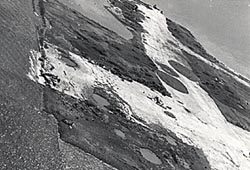
Truk Lagoon served as an important and formidable Japanese advance naval base during World War II, and today contains the remains of numerous sea vessels from this period. A devastating U.S. Navy carrier strike on Truk Lagoon in 1944 demonstrated American aerial superiority in the Pacific Theater. From July 1942 to February 1944, Japan's Combined Fleet operated out of Truk, extending its power into the Southeast and Southern Pacific. In August 1942, Japanese Admiral Isoroku Yamamoto, Commander in Chief of the Combined Fleet (First, Second and Third Fleets and the Sixth Submarine Fleet) arrived in Truk, maintaining his headquarters on board the giant battleship, Yamato. When Admiral Yamamoto's airplane was shot down near Rabaul on April 18, 1943, by American aircraft in an ambush attack, he was replaced by Admiral Mineichi Koga, whose flagship at Truk was the Musashi.

The threat of an American attack in early February 1944 caused the Combined Fleet to withdraw from Truk on February 10, never to return. The U.S. Navy's carrier strike on February 17 and 18, 1944, coordinated with an assault on Enewetak Atoll in the Marshall Islands, seriously impaired Truk's air force, destroyed virtually all Japanese shipping in the lagoon, and heavily damaged land installations. Truk was now virtually defenseless and the United States decided an invasion was unnecessary. The successful attack allowed plans to be made to bypass Truk and to strike at Japan's inner defenses in the Marianas. Within the lagoon are the submerged remains of freighters, tankers, supply vessels, the Fumitsuki, a Japanese destroyer and the 1-169, a large Japanese submarine. Today, the "underwater fleet" at Truk, resting amidst an infinite variety of marine life and containing the honored remains of Japanese warriors, is one of the world's underwater treasures.
Visit the National Park Service Travel American Aviation to learn more about Aviation related Historic Sites.
Last updated: August 22, 2017
